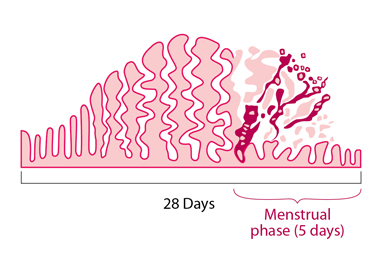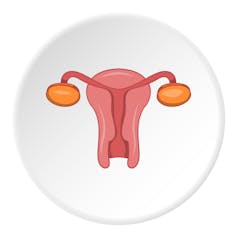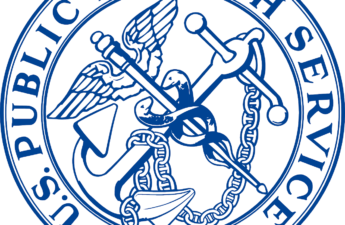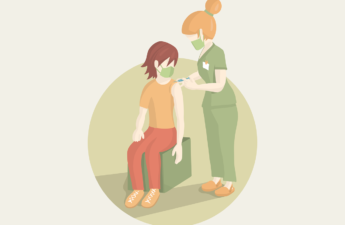
The experience of having periods varies between women. They can be light and completely painless for some, but completely debilitating for others.
The majority of women experience some cramping for one to two days during their period, and this is normal. Teenage girls are also more likely to suffer from painful periods compared to adult women, particularly adult women who’ve had children. But painful periods in adolescence usually improve over time.
However, some women have period pain that isn’t easily managed and that requires them to take time off school or work. Pain to this extent is not normal, and needs to be investigated.
Why periods cause pain
A period is the shedding of the endometrium – the lining of the womb (uterus). Every month, the uterus prepares itself for pregnancy by growing a thick lining that has a rich blood supply, awaiting implanting of an embryo.
When pregnancy does not ensue, the body produces a period, the by-product of the endometrium. During this time the blood vessels open, the lining sheds off the uterine wall, and the uterine muscle contracts to expel the blood and tissue.
During these mild contractions, it’s common for women to feel a lower abdominal cramping sensation as blood products are expelled through the uterine body and out of the cervix before it makes it way out the vagina.

The contractions are triggered by hormone-like compounds produced by the body called prostaglandins, which are the main source of pelvic pain associated with menstruation. Higher levels of prostaglandins have been associated with more severe menstrual cramps.
Cramping is usually strongest in the first one to two days of the period, then settles for the remaining four to five days.
Pain during periods is called dysmenorrhoea, and there are two types: primary and secondary.
Primary dysmenorrhoea refers to pain with periods, that begins soon after girls start menstruating. This tends to get better as the teenager gets older. The cause of this pain is not known, but hormonal fluctuations are thought to be implicated.
The main medications used to treat this pain are non steroidal anti-inflammatory drugs (NSAIDs), such as ibuprofen (Nurofen) or naproxen (Naprogesic). They work by blocking the action of prostaglandins.
Secondary dysmenorrhoea generally refers to period pain resulting from a medical disorder in the reproductive system. Instead of period pain improving over time, it worsens. This can be due to several conditions, the most common of which is endometriosis.
What is endometriosis?
Endometriosis is a condition in which tissue similar to the lining the endometrium (womb), grows outside of the womb. It can grow on the ovaries, bowel, and in some rare cases has even been found outside of the pelvis such as the lungs. The hormones that trigger a period cause bleeding at these sites of implanted endometrial tissue, and this causes pain.
Endometriosis usually causes period pain to start earlier and last longer than what is commonly experienced with menstruation. Sometimes the pain doesn’t go away when the period ends. Women with endometriosis can describe pain at the the time of ovulation, or pain with sex. Another problem associated with endometriosis is infertility.
It is a common condition affecting 16% to 61% of women of reproductive age experiencing symptoms. An estimated 100 million women worldwide suffer from endometriosis.

Women themselves may be unaware of endometriosis, or think their pain is normal. Many tend to tolerate the pain, which is can also occur in teenagers and young adults.
Although the exact cause of endometriosis is unknown, there are a number of theories such as retrograde (opposite to the intended direction) flow of endometrial tissue out of the womb through the fallopian tubes, and this tissue can implant in the pelvic cavity in locations outside of the womb.
The way nerves interpret pain in the pelvis also plays a role. It is an unusual disease in that some women can have a lot of endometriosis and have very few symptoms, whereas others can have only a small amount of disease and suffer from quite severe symptoms.
Affected girls and women often face negative impacts on their education or careers. There may be reduced productiveness at work or study as a result of the pain and discomfort caused by endometriosis.
Treatment includes hormonal tablets such as the oral contraceptive pill. The progestogen implant or intrauterine device, are also helpful for some in reduction of pain with periods. But these treatments don’t work for everyone.
How will I know if I have endometriosis?
Diagnosis of endometriosis can only be made via keyhole surgery. If it is seen surgically, and removed, women often have an improvement in their symptoms. But symptoms can return. Although it is not a deadly disease, the disruption it causes to women and society can be distressing – and as it is chronic, persisting throughout the woman’s menstrual life.
One study found an average delay of nearly four years before women with endometriosis sought medical help for their symptoms, and this delay brings about much anxiety and distress over the uncertainty of their own condition and how it can be resolved.
Many women are told their period pain is normal, but at keyhole surgery a number of these women with pelvic pain actually have endometriosis. However, making a decision to pursue surgery is a difficult one, as this carries minor risks such as bladder, bowel and vessel injury as well as anaesthetic risks. Care for women needs to be individualised in terms of whether the risks of surgery outweigh the symptoms experienced.
There are a number of different conditions which contribute to period pain. These include pain from the intestines, bladder and kidney, muscles and bones (including hip and back pain). There are also conditions that cause pain from the nerves in the pelvis and back.
Psychological conditions can also be responsible for or contribute to pelvic and period pain.
If you have severe period pain affecting your school, work, or quality of life then you should seek help, by first consulting your GP.
Rebecca Deans, Paediatric and adolescent gynaecologist at Royal Hospital for Women and Sydney Children’s Hospital, UNSW
This article is republished from The Conversation under a Creative Commons license. Read the original article.


